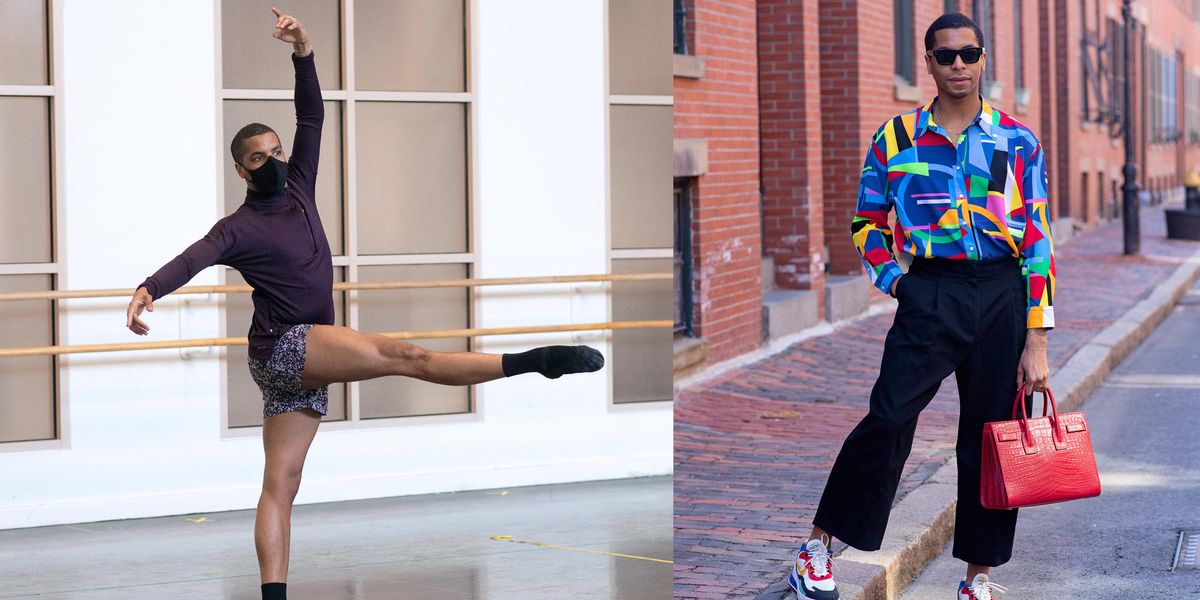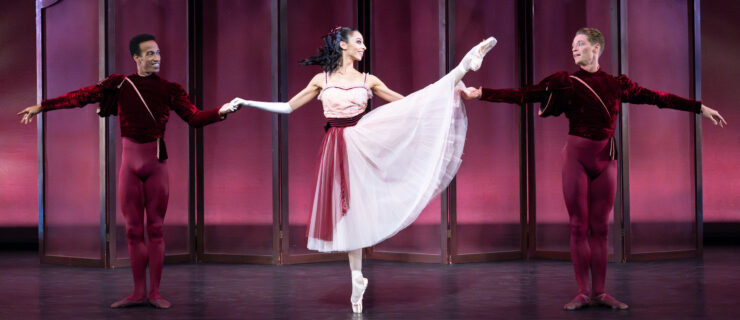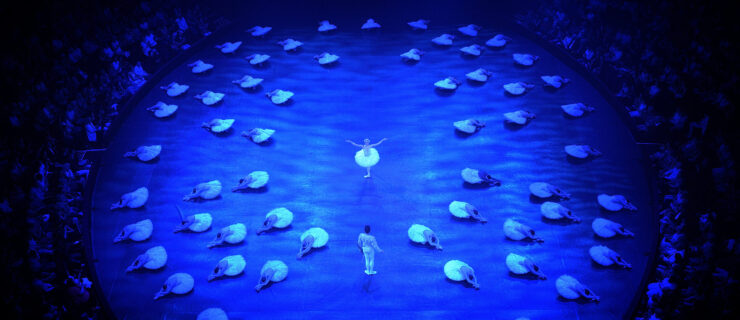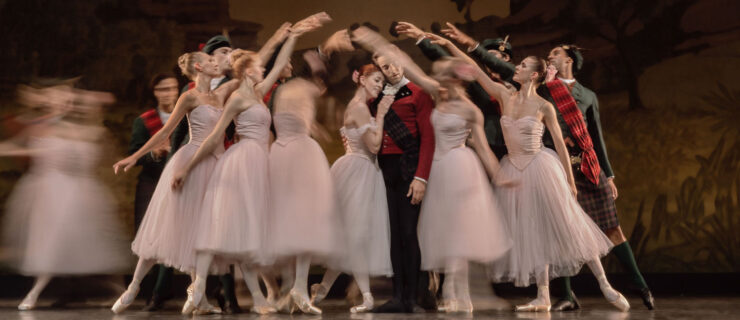Too Fat? Too Thin? Too Tall? Too Short?
Interviews by Christopher Blank, Rosie Gaynor and Nancy Wozny
A firestorm of controversy over recent reviews that singled out dancers’ bodies for criticism has raised the question of whether body type still matters in today’s ballet world. Does ballet’s identity rest on presenting a certain image of the ballerina? Pointeasked leading dancers and artistic directors what impact issues like height and weight have on their casting.
Maria Kochetkova
Principal, San Francisco Ballet
When I was 13, I never could be in the first row because I was taller than the others. Then everyone kept growing and I stayed 5′. In Russia, principal roles are never performed by short dancers. It’s the fashion of the day. If I were dancing 30 years ago, I would be normal.
At auditions I was told I was too short, but then artistic directors would see me dance and I would get invitations anyway. For years now I have been guesting with the Bolshoi Ballet, the Moscow Stanislavsky Ballet Theatre and the Mikhailovsky Ballet, dancing all the roles in Giselle and Sleeping Beauty that I was told I would never do. It proves it’s not about your height, but how you present yourself in a certain role. The stage is deceiving. It’s very hard to tell how tall or short people actually are. At the end of the day, your height is not what determines if you get a job. It’s all about your dancing.
Peter Boal
Artistic Director, Pacific Northwest Ballet
Body types do change in ballet. As Suzanne Farrell became Balanchine’s muse, suddenly longer legs, shorter torsos, long necks and small heads became the aesthetic all the way through to the youngest 8-year-olds auditioning for the School of American Ballet. I remember when I became an SAB faculty member, there was conversation about “Her head’s so big!” We were looking for pinheads. Which I suppose accentuates what Balanchine was looking for: length—length of leg, length of arm, length of neck, which goes right through to smaller heads.
This is a profession of athletes; it is a profession where we look so closely at the body. We enjoy looking at the body—healthy, beautiful bodies. Sometimes both the excess and the underweight are unappealing to look at. And I think dancers know that. I think they know when they’re in the zone. When they feel like athletes in peak performance condition. And that is the standard of the profession.
Melissa Sandvig
Freelance dancer
When I was 13, a Russian dancer shook his head when he saw me eating a banana, remarking that it had too many calories. I know it was because he wanted to help me. My teacher had told me I needed to watch my body because I have a tendency to be more muscular. I knew there were contemporary companies that would love my build, but my passion was classical ballet.
My first job was with Milwaukee Ballet. The artistic director, Basil Thompson, loved my body and the way I danced. Under him I went quickly from apprentice to corps member. At 19, my body was still not in puberty, so I was advised to take hormones to avoid problems later in life. I did and gained a little weight. By then Michael Pink had come on as artistic director. He put me on weight probation. I was still getting parts, but I could not make the artistic management happy.
It always affected my confidence that I didn’t quite fit in. Eventually it led me to take a break from the ballet world. I missed it, but resolved to work for people who appreciated my body. Suddenly I was working more than ever. I was finally embracing my body. Being on So You Think You Can Dance felt like a sweet victory when they called me “The Ballerina.”
Paul Vasterling
Artistic Director, Nashville Ballet
Tastes have changed. Back in the 1970s, dancers were super-duper thin. In my opinion, that’s less important to our audience. It’s not just about weight; it’s about extension, proportion, height, all the genetic stuff. There’s nothing more exposing of your physique than classical ballet. Ultimately, I want my dancers to look athletic, healthy and muscular. The fact is, women have to be able to be lifted by their partners, and men have to be strong enough to lift the women.
Physical issues are tricky to bring up. You can send someone down a bad psychological path by commenting on his or her weight. My philosophy is not to write people off. There’s a lot more room for individuality in regional companies, and there’s no specific body type for me. Really good dancers can make you forget that they might not have an ideal body.
Drew Jacoby
Photo by Marty Sohl
Drew Jacoby
Jacoby and Pronk
I’ve always had a love-hate relationship with my height. I liked being tall, but sometimes I wished I weren’t 5′ 11″. It seems like I have been tall forever. I went to Pacific Northwest Ballet School, where there were a lot of tall dancers, even though I was the tallest. The repertoire really suited my body type. I was certain I was going to get into PNB and was shocked when I didn’t. They told me to come back when I was strong enough to be a soloist. I was crushed. But I had met Alonzo King of LINES while at PNB, and he offered me a job.
Alonzo is all about freedom and individuality; also, he tends to like long bodies. So I went from school to working with a choreographer one on one. There was no issue with my height—it was only a good thing. When I stopped trying to fit in, and began being myself and exploiting my difference, my career took off. In the end, it was so much better for my artistic growth.
Dorothy Gunther Pugh
Artistic Director, Ballet Memphis
As an artistic director, I care about how our ballets look. Weight is important. Choreographers, certainly, come in and say, “I will not cast that dancer because he or she is too big.” In auditions especially, we all become critics. I have to pare down a group of 350 pretty quickly, and the first thing I determine is which bodies are right for us. It’s not just about being too big. I don’t want rail-thin people, either. Trying to keep women like little girls is a power move, albeit sometimes not a conscious one. I don’t want a company where everyone is the same height or has the same instep. I don’t think that’s very American. Yet dancers’ bodies need to look a certain way to make the kind of pictures we want for classical ballet.
Wendy Whelan
Principal, New York City Ballet
When I was 12, they discovered that I had scoliosis. I wore a brace for about five years. I only took it off to dance and to bathe. Dancing was my release. I became aware of my weaknesses and of my strengths both physically and emotionally. I was well into my professional career when I was first criticized for being too thin, too angular and crooked. It was a shock after I had reached that pinnacle. I have a body where, if I drop a few pounds, it shows a lot. I wasn’t trying to lose weight, but when you work hard during the season, you do. I felt defenseless. Even now, it can still feel harsh when a critic remarks on my “physicality” as a flaw in my dancing, because of all the effort I put into my body. It’s my own personal house of cards, a serious work of art that I’ve spent decades building. It’s truly not something I could or would ever change. Although a negative criticism will certainly sting, I don’t dwell on it. I try to remind myself that nobody has a perfect body and no dancer is a perfect dancer. True beauty lies within each of us to create for ourselves the best we can with what we have been given.
For more news on all things ballet, don’t miss a single issue.





